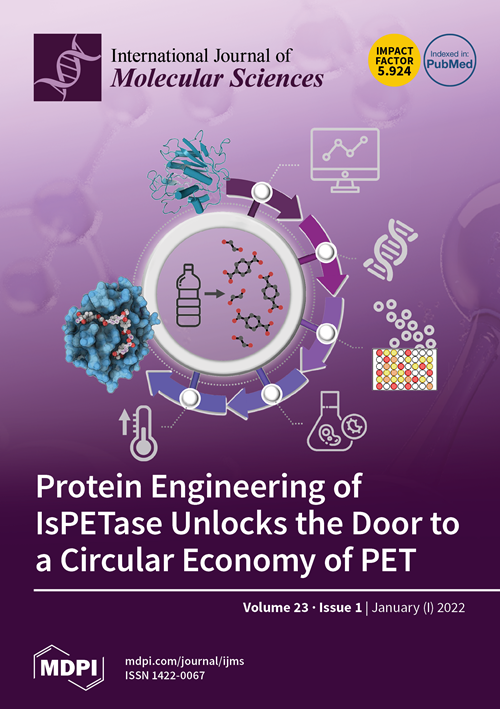N-Acetylcysteine Antagonizes NGF Activation of TrkA through Disulfide Bridge Interaction, an Effect Which May Contribute to Its Analgesic Activity
IF 4.9
2区 生物学
Q1 BIOCHEMISTRY & MOLECULAR BIOLOGY
引用次数: 0
Abstract
N-acetylcysteine (NAC), a mucolytic agent and an antidote to acetaminophen intoxication, has been studied in experimental conditions and trials exploring its analgesic activity based on its antioxidant and anti-inflammatory properties. The purpose of this study is to investigate additional mechanisms, namely, the inhibition of nerve growth factor (NGF) and the activation of the Tropomyosin receptor kinase A (TrkA) receptor, which is responsible for nociception. In silico studies were conducted to evaluate dithiothreitol and NAC's interaction with TrkA. We also measured the autophosphorylation of TrkA in SH-SY5Y cells via ELISA to assess NAC’s in vitro activity against NGF-induced TrkA activation. The in silico and in vitro tests show that NAC interferes with NGF-induced TrkA activation. In particular, NAC breaks the disulfide-bound Cys 300–345 of TrkA, perturbing the NGF-TrkA interaction and producing a rearrangement of the binding site, inducing a consequent loss of their molecular recognition and spatial reorganization, which are necessary for the induction of the autophosphorylation process. The latter was inhibited by 40% using 20 mM NAC. These findings suggest that NAC could have a role as a TrkA antagonist, an action that may contribute to the activity and use of NAC in various pain states (acute, chronic, nociplastic) sustained by NGF hyperactivity and/or accompanied by spinal cord sensitization.N-乙酰半胱氨酸通过二硫桥相互作用拮抗 NGF 对 TrkA 的激活,这种作用可能有助于提高其镇痛活性
N-乙酰半胱氨酸(NAC)是一种粘液溶解剂,也是对乙酰氨基酚中毒的一种解毒剂,它具有抗氧化和抗炎特性,已在实验条件和试验中对其镇痛活性进行了研究。本研究的目的是探究其他机制,即抑制神经生长因子(NGF)和激活肌球蛋白受体激酶 A(TrkA)受体,该受体负责痛觉感受。为了评估二硫苏糖醇和 NAC 与 TrkA 的相互作用,我们进行了硅学研究。我们还通过 ELISA 测量了 SH-SY5Y 细胞中 TrkA 的自身磷酸化,以评估 NAC 对 NGF 诱导的 TrkA 激活的体外活性。硅学和体外测试表明,NAC 可干扰 NGF 诱导的 TrkA 激活。特别是,NAC 会破坏 TrkA 的二硫键 Cys 300-345,扰乱 NGF-TrkA 的相互作用,并导致结合位点的重新排列,从而使其失去分子识别和空间重组能力,而这正是诱导自磷酸化过程所必需的。使用 20 mM NAC 可抑制后者 40%。这些发现表明,NAC 可作为 TrkA 拮抗剂发挥作用,这种作用可能有助于 NAC 在 NGF 活性亢进和/或伴有脊髓敏感化的各种疼痛状态(急性、慢性、非痉挛性)中的活性和应用。
本文章由计算机程序翻译,如有差异,请以英文原文为准。
求助全文
约1分钟内获得全文
求助全文
来源期刊

International Journal of Molecular Sciences
Chemistry-Organic Chemistry
CiteScore
8.10
自引率
10.70%
发文量
13472
审稿时长
17.49 days
期刊介绍:
The International Journal of Molecular Sciences (ISSN 1422-0067) provides an advanced forum for chemistry, molecular physics (chemical physics and physical chemistry) and molecular biology. It publishes research articles, reviews, communications and short notes. Our aim is to encourage scientists to publish their theoretical and experimental results in as much detail as possible. Therefore, there is no restriction on the length of the papers or the number of electronics supplementary files. For articles with computational results, the full experimental details must be provided so that the results can be reproduced. Electronic files regarding the full details of the calculation and experimental procedure, if unable to be published in a normal way, can be deposited as supplementary material (including animated pictures, videos, interactive Excel sheets, software executables and others).
 求助内容:
求助内容: 应助结果提醒方式:
应助结果提醒方式:


